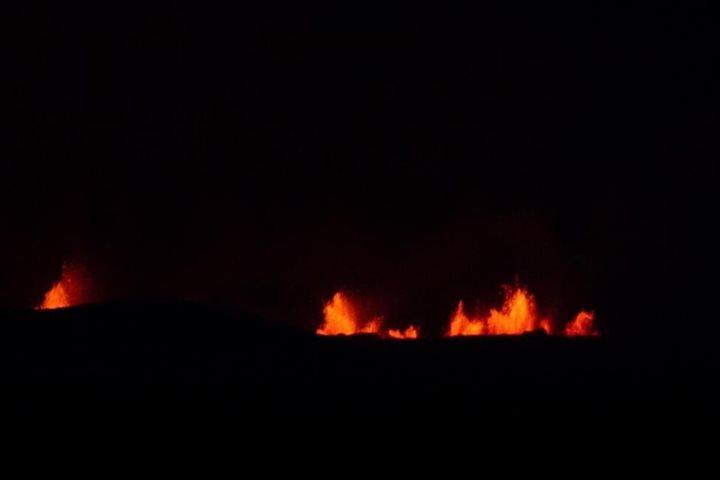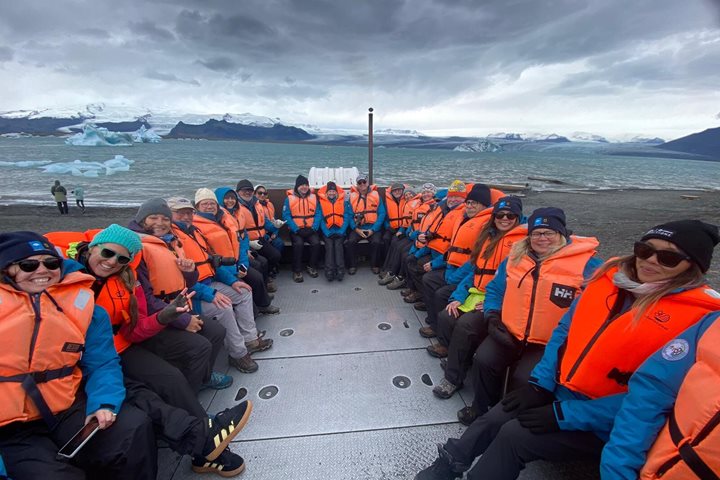We left Akureyri early this morning for our full day tour to Lake Mývatn – Midge Lake, so named after all the midges that are the main food of the birds that breed in the region. After a short photo break on the east side of Eyjafjörður with great views over Akureyri we continued to the beautiful waterfall Goðafoss – Waterfall of the Gods. The waterfall got its name when the local chieftain threw his carved figures of the old pagan gods into the falls after he himself a few weeks earlier, still a pagan man at the time, had made a decision for the whole Icelandic nation to accept Christianity and be baptized.
Our next stop was Skútustaðir with all its pseudo craters. They were formed in steam explosions some 2000 years ago when the lava flowed into the lake and boiled the water that got trapped under it. The steam forced itself up through the lava, leaving behind what looks like pockmarks in the landscape when seen from the air. Birds were abundant – ducks of various kinds as well as waders and others.
At a nearby hotel we had our lunch, a wonderful trout from Lake Mývatn. Desert was the Icelandic specialty skyr, a yoghurt-like dairy product.
On we went to look at the bizarre lava formations of Dimmuborgir – Dark Rocks. Our guide convinced us that all these strange rocks were trolls that had been partying heavily, drinking lots of something much stronger than water and therefore not noticing the rising sun. The sunrays turned all the trolls into rocks. We could easily see their ugly faces, big noses and so on. We had learned our lesson: drink in moderation.
The bus now took us to Viti – Hell, a crater formed in an explosion in the year 1724 at the beginning of an eruption period that lasted for five years. The mud pools at Námaskard (Mine Pass) were our next destination, with steam and foul sulfur smell everywhere, boiling basalt mud and very colorful deposits all around.
We then headed back to our ship which had repositioned to the town of Húsavik – House Cove, sometimes called the whale watching center of Iceland. The whale museum has a wealth of information on whales and whaling in Iceland.
Activities were not over though, because after dinner we made a landing on the island Grímsey. The Arctic Circle runs through that island so we walked up to the monument signpost that marks that latitude and also tells you how far it is to the various big cities in the world. There we had a toast to our great achievement and afterwards took a look at the nearby bird cliffs with hundreds of murres and puffins.
We were back to the ship around midnight after a full day.









